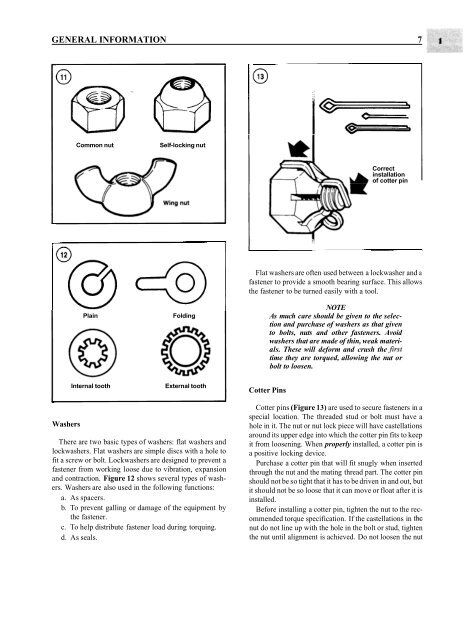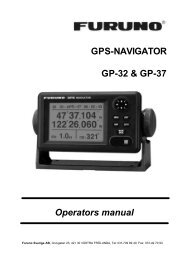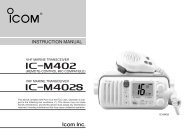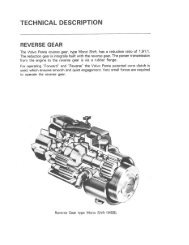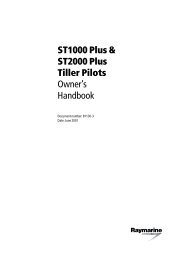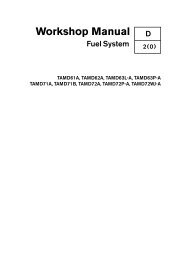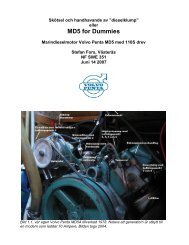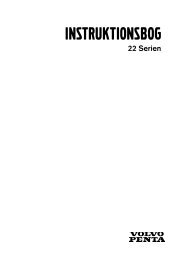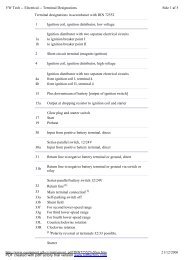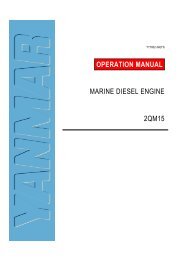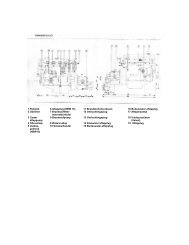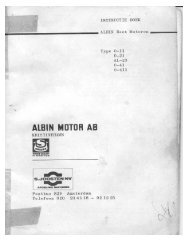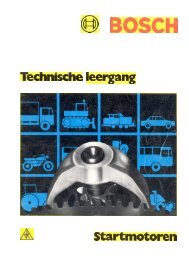You also want an ePaper? Increase the reach of your titles
YUMPU automatically turns print PDFs into web optimized ePapers that Google loves.
GENERAL INFORMATION 7<br />
Common nut<br />
Self-locking nut<br />
Correct<br />
installation<br />
of cotter pin<br />
Plain<br />
Folding<br />
Flat washers are often used between a lockwasher and a<br />
fastener to provide a smooth bearing surface. This allows<br />
the fastener to be turned easily with a tool.<br />
NOTE<br />
As much care should be given to the selection<br />
and purchase of washers as that given<br />
to bolts, nuts and other fasteners. Avoid<br />
washers that are made of thin, weak materials.<br />
These will deform and crush the jrst<br />
time they are torqued, allowing the nut or<br />
bolt to loosen.<br />
Internal tooth<br />
External tooth<br />
Cotter Pins<br />
Washers<br />
There are two basic types of washers: flat washers and<br />
lockwashers. Flat washers are simple discs with a hole to<br />
fit a screw or bolt. Lockwashers are designed to prevent a<br />
fastener from working loose due to vibration, expansion<br />
and contraction. Figure 12 shows several types of washers.<br />
Washers are also used in the following functions:<br />
a. As spacers.<br />
b. To prevent galling or damage of the equipment by<br />
the fastener.<br />
c. To help distribute fastener load during torquing.<br />
d. As seals.<br />
Cotter pins (Figure 13) are used to secure fasteners in a<br />
special location. The threaded stud or bolt must have a<br />
hole in it. The nut or nut lock piece will have castellations<br />
around its upper edge into which the cotter pin fits to keep<br />
it from loosening. When properly installed, a cotter pin is<br />
a positive locking device.<br />
Purchase a cotter pin that will fit snugly when inserted<br />
through the nut and the mating thread part. The cotter pin<br />
should not be so tight that it has to be driven in and out, but<br />
it should not be so loose that it can move or float after it is<br />
installed.<br />
Before installing a cotter pin, tighten the nut to the recommended<br />
torque specification. If the castellations in thc<br />
nut do not line up with the hole in the bolt or stud, tighten<br />
the nut until alignment is achieved. Do not loosen the nut


